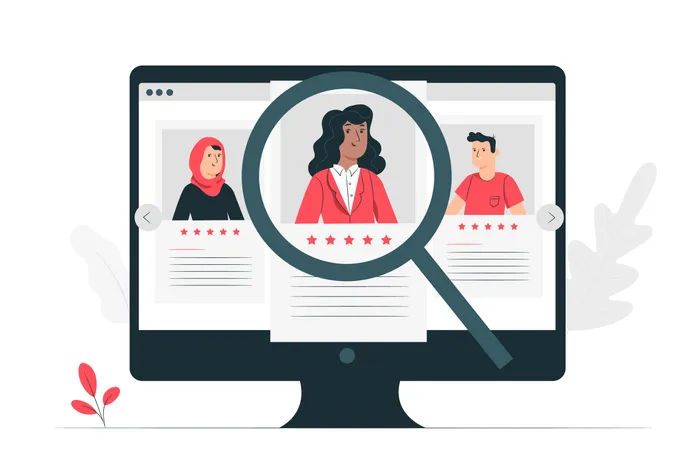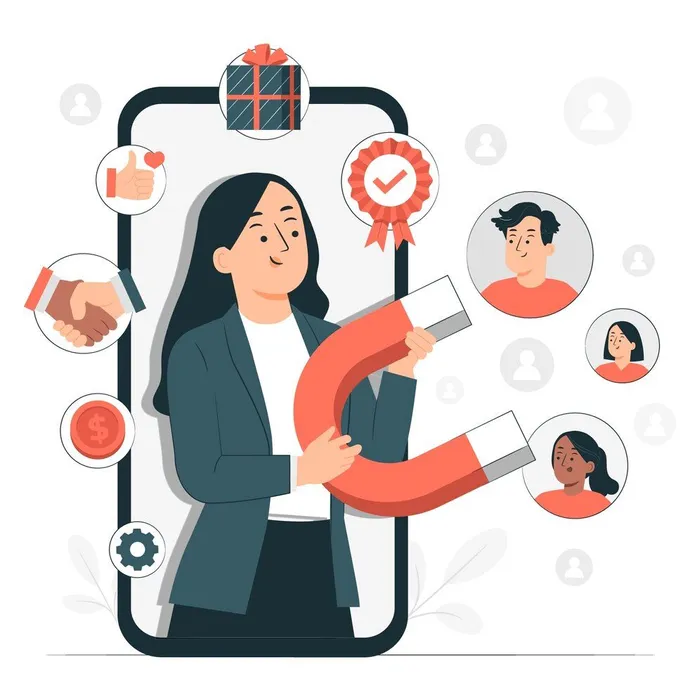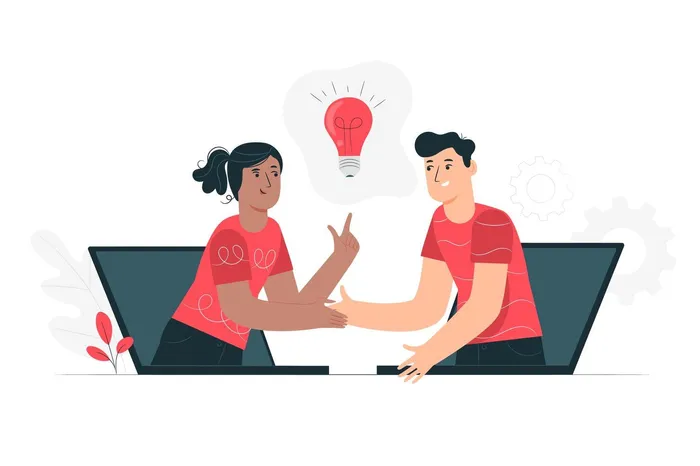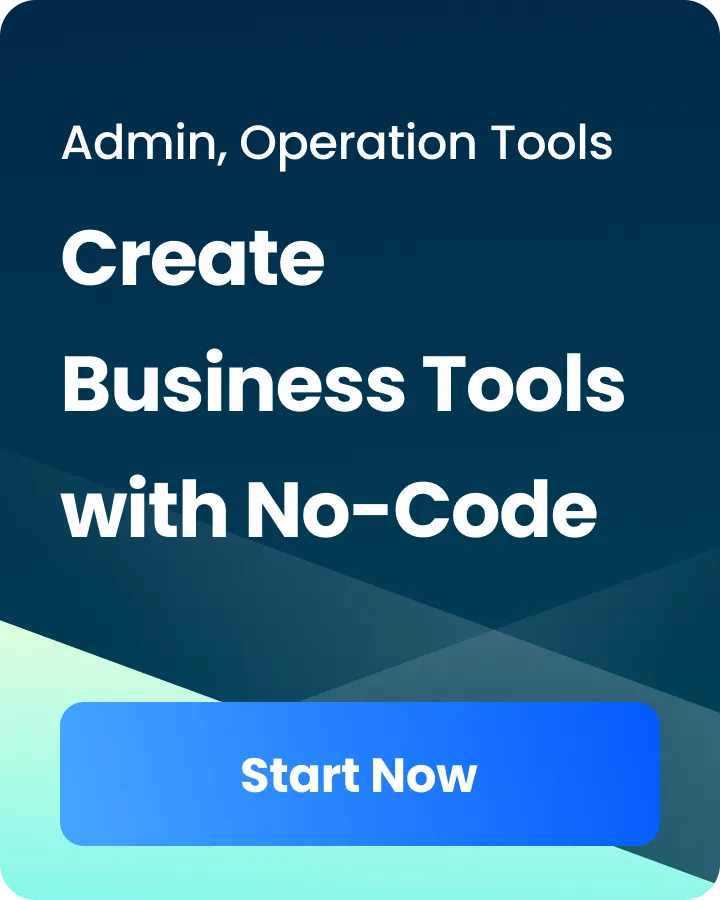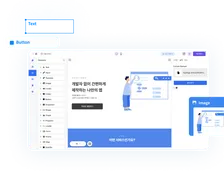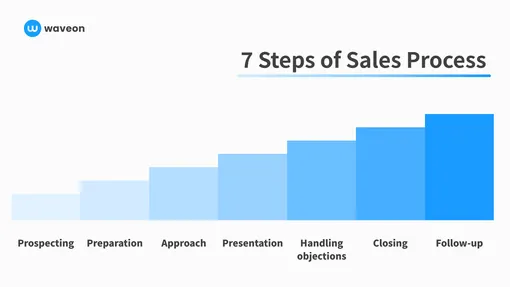Sales
Mastering the Sales Process: A Structured Approach to Success
Waveon Team
2/12/2025
0 min read
TABLE OF CONTENTS
Closing a deal isn’t just about working hard or having the perfect pitch—it’s about understanding the market, identifying customer needs, and engaging them at the right time. Even the most dedicated sales professionals often face rejection more than success, leading to moments of self-doubt: "Am I really cut out for sales?"
But sales isn’t just a talent; it’s a structured process. By following a well-defined roadmap, you can systematically improve your chances of success.
Imagine if navigating sales was like following a GPS to your destination. While each industry requires tailored strategies, the fundamental framework remains consistent—the 7-step sales process. In this guide, we’ll break down each stage to help you refine your approach and drive better results.
💡 What You’ll Learn
Overview of the sales process
Benefits of a structured sales framework
Step-by-step execution and success tips
What Is the Sales Process?
The sales process is a systematic approach to identifying potential customers, building relationships, and closing deals.
A structured process offers several key advantages:
1. A Consistent, Data-Driven Approach
Relying solely on intuition or individual experience can lead to inconsistent results. A well-defined sales process ensures that every team member follows proven methodologies, leading to greater confidence and predictability in customer interactions. It also allows for performance analysis and optimization at an organizational level.
2. Customer-Centric Strategy
Sales isn’t just about pushing products—it’s about understanding customer needs and providing tailored solutions. A structured process ensures that customer engagement remains consistent and relevant, fostering trust and increasing the likelihood of closing deals.
3. Efficient Use of Time and Resources
Without a clear roadmap, sales reps can waste valuable time figuring out their next steps. A systematic process enables precise execution of strategies at each stage, leading to higher productivity and reduced costs. Additionally, new team members can be onboarded more efficiently.
4. Data-Driven Performance Insights
Simply tracking closed deals doesn’t provide a full picture of what’s working and what’s not. By structuring the sales process, you can analyze customer reactions at each stage, identify weak points, and continuously refine strategies.
The 7 Stages of the Sales Process
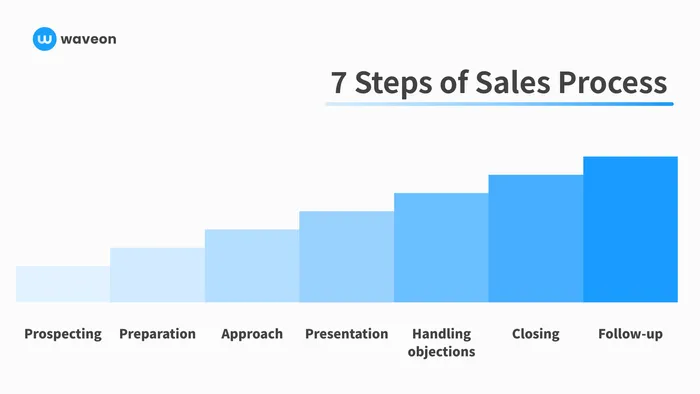
1. Prospecting: Identifying and Researching Potential Customers
Prospecting involves identifying individuals or businesses that are likely to be interested in your product or service. Sales teams often work with marketing-generated leads or proactively search for potential customers.
How to Approach It:
Define your ideal customer profile:
Consider industry, company size, and key challenges your product can address.
Identify decision-makers and influencers within target organizations.
Leverage data-driven prospecting:
Utilize sales tools (e.g., LinkedIn Sales Navigator, CRM systems) for research.
Tap into existing networks and referrals for high-quality leads.
Review inbound leads generated by marketing teams to identify qualified prospects.
Success Tips:
✔ Use data, not guesswork, to find the right customers.
✔ Leverage mutual connections (colleagues, alumni, industry events) for a warm introduction.
✔ Avoid random outreach—carefully vet leads before engaging.
2. Preparation: Conducting Research and Developing a Sales Strateg
The preparation stage involves deep research into each prospect to craft a personalized engagement strategy. A generic pitch rarely works—understanding the prospect’s specific pain points is key.
How to Approach It:
Conduct detailed customer research:
Analyze company websites, press releases, social media, and financial reports.
Determine whether they use competitor solutions and identify differentiation points.
Map out key decision-makers and their roles.
Establish credibility before outreach:
Engage in industry discussions on LinkedIn to position yourself as a thought leader.
Attend networking events or industry forums to build connections naturally.
Prepare a customized outreach message highlighting value, not just features.
Success Tips:
✔ Identify what the customer already knows—most have done their research before speaking to sales.
✔ Go beyond surface-level research—focus on how your solution addresses their core challenges.
✔ Position yourself as an industry expert before reaching out.
3. Approach: First Contact and Relationship Building
Your first interaction with a prospect sets the stage for future conversations. It’s essential to build trust and establish a meaningful dialogue.
How to Approach It:
Craft compelling initial outreach messages:
Keep emails and calls concise, focusing on the prospect’s pain points.
Personalize the approach—show you understand their business challenges.
Avoid generic introductions; instead, start with a value-driven hook.
Conduct engaging first meetings:
Focus on listening rather than pitching.
Identify pain points and discuss existing solutions they’re using.
Share relevant success stories to build credibility.
Success Tips:
✔ Prioritize dialogue over a one-sided sales pitch.
✔ Avoid diving into product details too soon—ensure the customer sees the value first.
✔ Prepare a 30-second elevator pitch to succinctly convey your core value proposition.
4. Presentation: Communicating Your Value Effectively
A sales presentation isn’t just about listing features—it’s about demonstrating how your product solves the customer’s problem.
How to Approach It:
Create tailored proposals:
Address specific challenges and position your product as the ideal solution.
Use industry-specific case studies and data to strengthen your argument.
Deliver an engaging, story-driven pitch:
Illustrate how your solution helps the customer achieve their goals.
Showcase real-world examples of successful implementations.
Incorporate live demos and interactive elements:
Let prospects experience the product firsthand to visualize its benefits.
Success Tips:
✔ Focus on outcomes, not just features.
✔ Observe customer reactions and adjust accordingly.
✔ Encourage questions to foster engagement.
5. Handling Objections: Addressing Customer Concerns
Customer objections are a natural part of the sales process. Instead of seeing them as roadblocks, view them as opportunities to better understand and address concerns.
How to Approach It:
Identify the root cause of objections:
Are they concerns about price, ROI, competition, or product fit?
Use empathy and active listening:
Ask open-ended questions to uncover deeper concerns.
Validate their concerns before presenting solutions.
Provide data-driven reassurance:
Use case studies, testimonials, and ROI metrics to reinforce your argument.
Success Tips:
✔ Treat objections as learning opportunities.
✔ Avoid defensive responses—acknowledge concerns first.
✔ Prepare responses for common objections in advance.
6. Closing: Finalizing the Deal
Closing is the most critical moment in sales—when the customer makes their purchase decision and signs the contract. Your role is to provide support until the very end to ensure they feel confident in their decision.
How to Approach It:
Recognizing Buying Signals
When customers start asking specific questions about pricing, contract terms, or implementation timelines, it indicates strong buying intent.
If they ask, "Will this product deliver the results we expect?" they are likely in the final decision stage.
Using Closing Questions to Facilitate the Decision
"Are you ready to move forward with the contract?"
"Is there any additional information you need before finalizing the deal?"
"If you decide today, we can start implementation next week. What works best for you?"
Overcoming Last-Minute Hesitations
If the customer hesitates, consider offering incentives like a discount or a free trial.
Be flexible with contract terms to accommodate their needs.
Success Tips
✔ Avoid aggressive pressure: Support the customer’s decision-making process rather than forcing a choice.
✔ Act quickly after closing: Start the onboarding process immediately to ensure a smooth transition.
✔ Provide extra motivation if needed: Offer time-sensitive incentives to encourage a faster decision.
7. Follow-Up: Building Long-Term Relationships
Follow-up is about helping customers successfully use the product after signing the contract and fostering a long-term relationship. Satisfied customers are more likely to lead to cross-sell, upsell, and referrals.
How to Approach It:
Provide Dedicated Support in the First 30–90 Days
Offer thorough onboarding to help customers utilize the product effectively.
Check in regularly to address any issues and incorporate feedback.
Maintain Ongoing Engagement & Offer Additional Value
Schedule periodic meetings (e.g., quarterly reviews) to build trust and maintain a strong relationship.
Analyze usage data to identify improvement areas or opportunities for additional product recommendations.
Showcase Customer Success Stories
Create case studies, interviews, or testimonials featuring satisfied customers.
Sharing real success stories helps reinforce your brand’s credibility.
Follow-up Success Tips
✔ Focus on customer outcomes, not just issue resolution: Help customers achieve their business goals using your product.
✔ Show ongoing interest even after the sale: Build a partnership, not just a transaction.
✔ Encourage referrals and repeat business: Satisfied customers are your best advocates—maintain strong relationships to drive organic growth.
Starting Your Sales Process with Waveon Customer Inquiry & AI Research Template
Emphasizing only the features and advantages of a product is no longer enough to succeed in sales. With countless competing products in the market, customers seek solutions tailored specifically to their needs.
So, how should you approach potential customers? The answer lies in a personalized sales strategy.
Understanding each customer's situation and needs is crucial. This is why the prospecting and preparation stages are so important in the sales process.
Waveon’s Customer Inquiry & AI Research Template helps streamline this process efficiently.
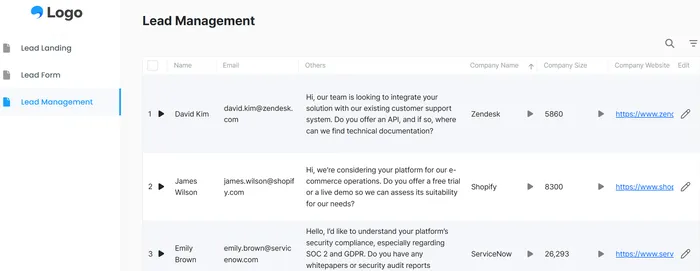
As well as we provide a lead capture form, when a customer submits an inquiry, the template analyzes their information and research key company details such as company size, revenue, industry, key competitors, and social media presence.
No more wasting time manually searching for customer information. With out AI research template, you can quickly identify the most relevant and high-potential prospects for your product.
Enhance your sales strategy and gain a competitive edge with the Waveon Customer Inquiry & AI Research Template.

